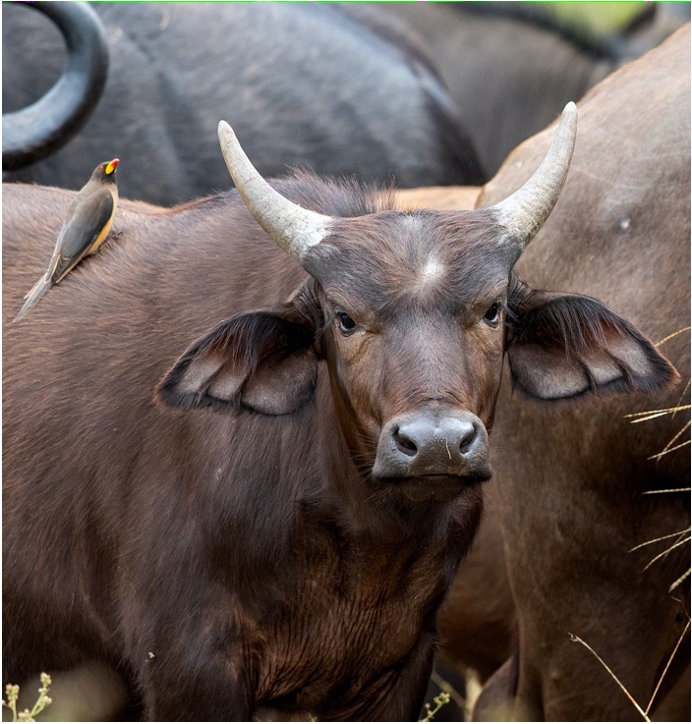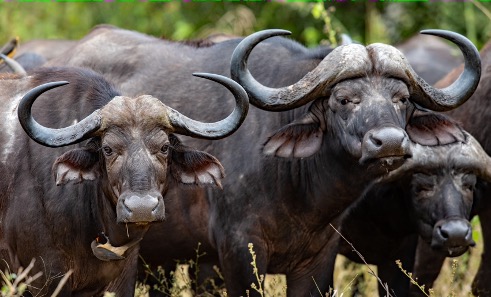May 2021
Buffalo horns
Share:
Buffalo horns
The more time you spend in the company of African/Cape buffalo(Syncerus caffer) the more you notice how each one’s horns are a unique shape and size. Their curved horns add to their imposing stature and can help us distinguish age and sex. From the base, the horns diverge downwards, then smoothly curve upwards and outwards and then inwards or backwards.
Buffalo horns are permanent pointed projections on the head that consist of a covering of keratin and other proteins surrounding a core of live bone. Horns are distinct from antlers, which are not permanent.
The horns start to grow up and out and are fully formed when the buffalo reaches the age of 5 or 6 years. In bulls the horns meet in the middle of their heads forming a continuous bone shield referred to as a "boss". In large bulls, the distance between the ends of the horns can reach upwards of one metre. The bosses do not become "hard" until they reach the age of 8 to 9 years. In cows the horns are, on average, 10–20% narrower and smaller, and they do not have a boss.
We spent some time watching this breeding herd of buffalo that had been washed in the rain from the night before. They were looking exceptionally clean and shiny, and had some individuals sporting impressively large and dramatic horn formations.

Above: A young calf with its upward pointing horns.
Below: A mature cow (left) and bull (right).


By Jenny Hishin
Author / Field Guide